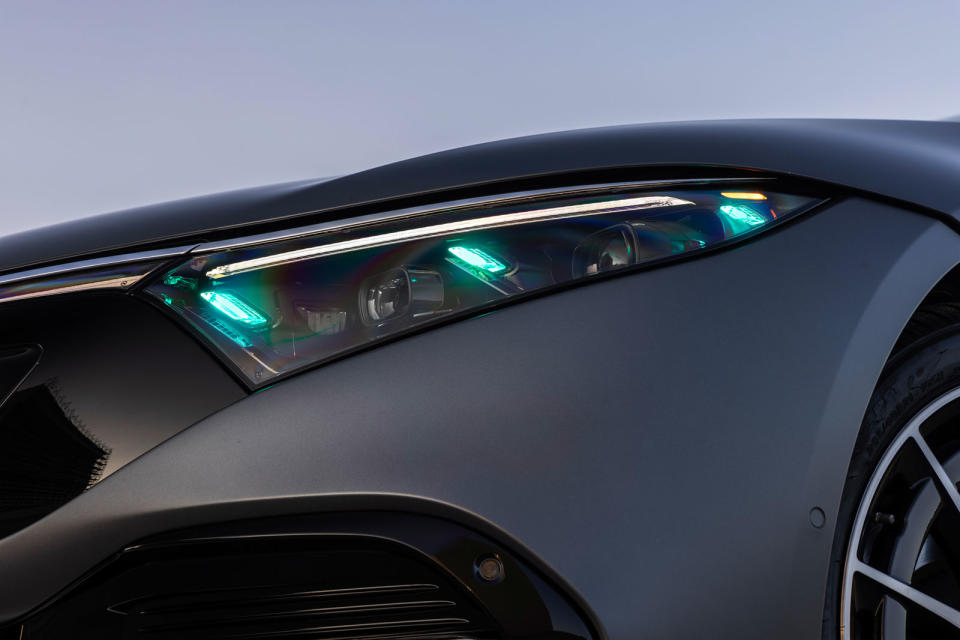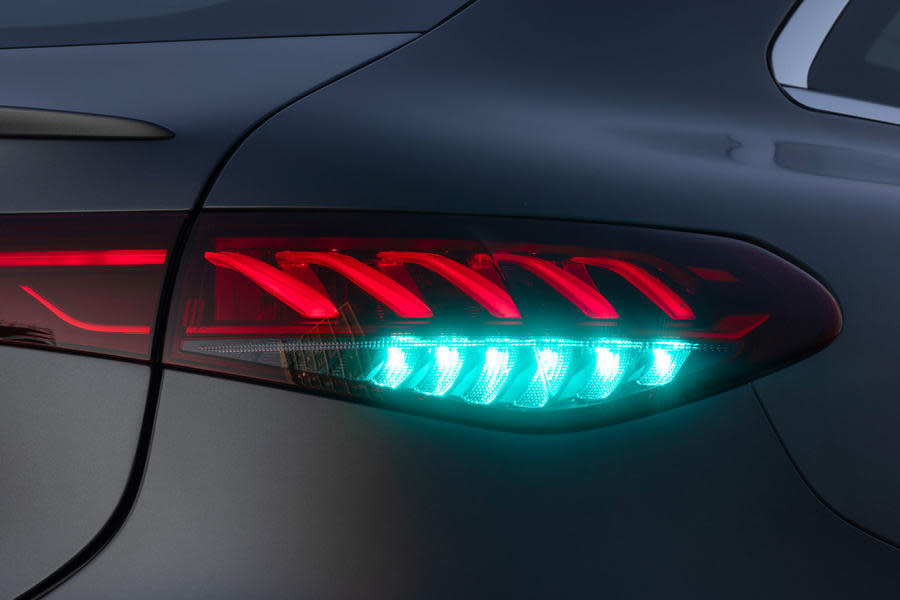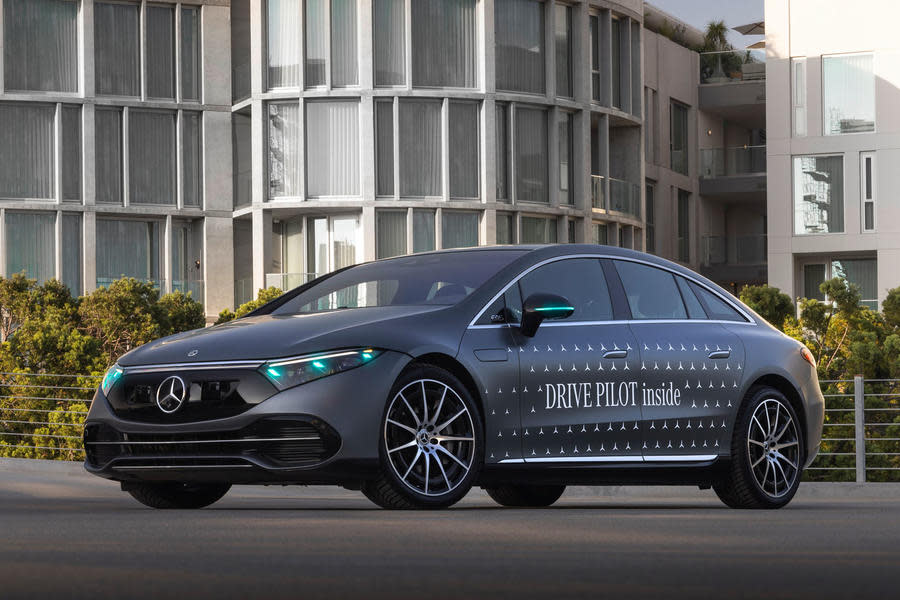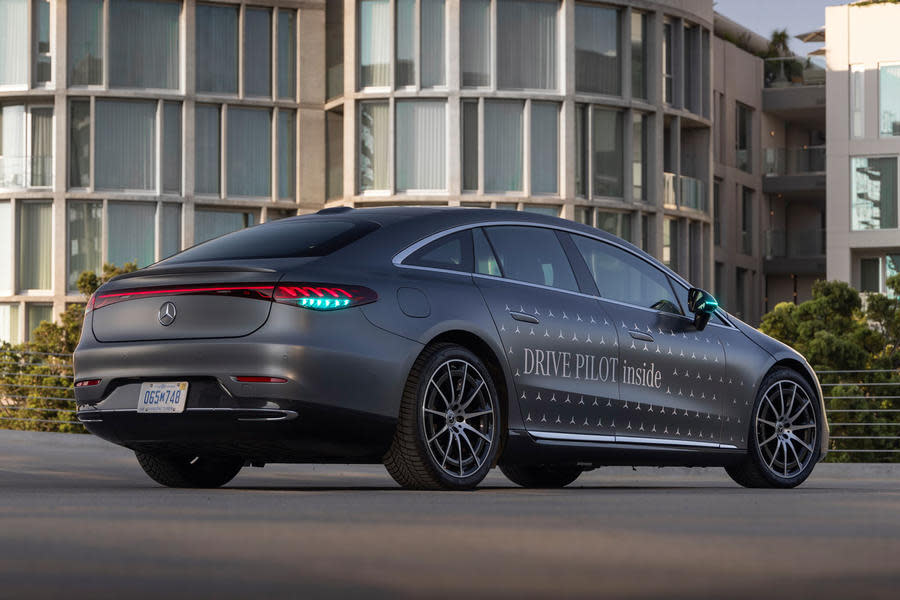Mercedes to use turquoise lights for self-driving cars

Turquoise lights will signal that a car is in control of itself
Mercedes-Benz will use turquoise daytime running lights to signal that a car is driving autonomously in the US, after the technology was approved for use in California and Nevada.
The two American states were the first to approve Mercedes’ level-three automated driving technology for use on public roads.
Named Drive Pilot, the optional lidar-based system allows the Mercedes S-Class and Mercedes EQS to drive themselves at speeds of up to 40mph.
It guides the vehicle in its lane, actively reacting to the distance of the vehicle in front. It can also acknowledge traffic and road signs and perform evasive manoeuvres independently.
According to guidelines from engineering standards organisation SAE International, Drive Pilot meets the first level of autonomy in which human involvement isn't needed for driving the car.
As such, drivers will be able to take their hands off the wheel and perform “secondary activities” on the car's infotainment display, such as sorting emails and online shopping.

However, drivers must be ready to take the reins in poor conditions, such as inclement weather.
The car will perform an emergency procedure if the driver doesn't take back control following urgent prompting or after an expiration timer is sounded, coming to a standstill, switching on its hazard warning lights and unlocking its doors.
The new turquoise lights – an industry first – will be used to signal to other road users that Drive Pilot is active.
Mercedes said it chose turquoise for its visibility and distinctiveness from the colours used for traffic signals and traditional vehicle lighting.
According to Mercedes, the system could benefit police officers by allowing them to more easily identify that a driver isn't in control of their car and whether they should be performing “secondary activities”.

In California, the lights have initially been approved for a two-year test. In Nevada, they will become legal for production cars from 2026.
Mercedes chief technology officer Markus Schäfer said: “With the development of automated-driving marker lights, Mercedes-Benz is once again setting new industry standards.
“We're the first auto maker in the world to receive such approvals in the US, specifically in California and Nevada.
“The more automated driving vehicles populate the road, the more important communication and interaction between the vehicle and the environment become.”
Schäfer previously hailed the introduction of Drive Pilot as a “radical paradigm shift”, as the first level-three system to receive official approval.

What are the levels of automation?
SAE International defines six levels of automation, numbered zero to five.
Levels zero to two require the driver to be active at all times, with their hands on the wheel and attention on the road.
It opens with systems limited to warning or temporarily assisting the driver, such as automatic emergency braking, blind spot warnings or lane departure warnings.
Level one includes systems that can provide steering, acceleration or braking support, such as lane centering assistance or active cruise control – but with only one system active at any time.
Systems that can activate one or more level-one functions simultaneously are deemed level two.
Level three is the first to be considered autonomous driving by allowing a driver to take their hands off the steering wheel.
Such systems can drive a vehicle under a specific set of conditions and will not operate unless all of those conditions are met.
Mercedes’ Drive Pilot, for example, only works at speeds up to 40mph, on pre-determined motorways, in daylight and in clear weather.
Drivers must also be ready to take back control at a moment’s notice, such as if it starts raining or as they approach roadworks.
Level four allows the driver to completely switch off – and for vehicles to omit a steering wheel and pedals – but remains bound to the same environmental conditions as level-three systems.
Level five, the ultimate level of autonomy, allows a vehicle to drive itself anywhere in any conditions.
Additional reporting by Jack Warrick
]]>

 Yahoo Autos
Yahoo Autos 